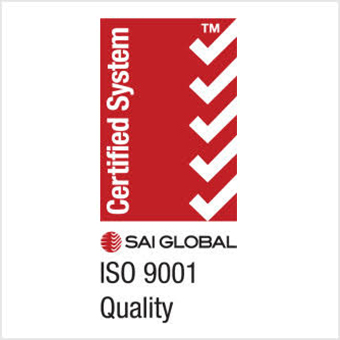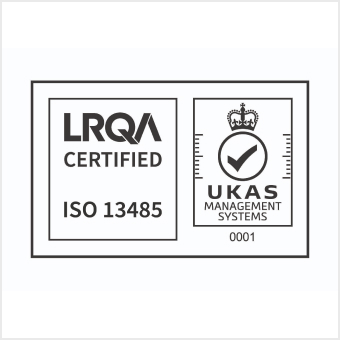ASTM D543
1. Introduction to ASTM D543
ASTM D543 is a standard test method developed by ASTM International that provides guidelines for evaluating the chemical resistance of plastic materials. It defines the procedures to determine how plastics interact with various chemicals, including their ability to withstand exposure to aggressive substances, which could cause degradation or affect the material’s mechanical properties. The test results allow manufacturers, engineers, and material scientists to assess the suitability of different plastic materials for specific applications where chemical resistance is a key consideration.
The ability of plastics to resist chemical attacks—such as corrosion, degradation, swelling, and softening—is crucial in industries such as automotive, aerospace, electronics, medical devices, and consumer goods. By using ASTM D543, manufacturers can predict the longevity, safety, and performance of plastic components that will encounter chemicals in their working environments.
2. Purpose and Scope of ASTM D543
The main purpose of ASTM D543 is to provide a standardized method for testing the chemical resistance of plastic materials under controlled conditions. The scope of this standard includes:
- Exposure to Various Chemicals: The test method simulates the effects of chemical exposure by immersing the plastic material in specific chemicals or exposing it to vapors or gases.
- Mechanical and Physical Property Changes: By evaluating changes in the plastic material’s properties (such as hardness, tensile strength, elongation, and weight), the test helps determine the effect of chemical exposure.
- Material Selection: The results of this test help engineers and designers choose the right plastic material for applications where resistance to chemical agents, such as solvents, oils, acids, bases, or gases, is essential.
This test method is commonly applied to thermoplastic and thermoset materials and can be used to evaluate a broad range of chemicals, including industrial solvents, oils, fuels, acids, alkalis, and salts.
3. Overview of the Testing Process
The procedure outlined in ASTM D543 is relatively straightforward, but it requires strict control of variables to ensure consistent and reliable results. The steps typically include the following:
- Sample Preparation:
- Specimens of the plastic material are cut into uniform shapes, such as rectangular strips or discs, ensuring they have consistent dimensions for accurate testing.
- The samples must be clean and free from any contaminants, which could skew the results. Special care must be taken to ensure that the surface of the plastic is not damaged or altered prior to the test.
- Chemical Selection:
- The chemicals chosen for testing are typically those with which the plastic material will come into contact in its intended application. The chemical agents can include oils, fuels, acids, solvents, and gases.
- The concentration, temperature, and exposure time of the chemical must be specified, as these factors will influence the test results.
- Exposure Conditions:
- Immersion Method: One of the primary testing methods involves immersing the plastic specimens into the chemical for a specified duration. The temperature and chemical concentration are controlled throughout the test.
- Vapor Method: In some cases, exposure to chemical vapors may be tested. In this case, the specimens are placed in a closed chamber with controlled vapor concentrations.
- Pressurized or Dynamic Exposure: Some tests may require exposing the samples to dynamic environments, such as in pressurized vessels or moving chemical flows, to simulate operational conditions more accurately.
- Duration and Temperature Control:
- The exposure time and temperature conditions are critical variables that can impact the outcome. ASTM D543 requires detailed reporting of these conditions.
- Typically, samples are exposed to the chemicals for several hours, days, or even weeks depending on the application and the aggressiveness of the chemicals.
- Evaluation of Properties:
- Physical Changes: After the exposure period, the specimens are removed, cleaned, and evaluated for changes in physical appearance, such as color changes, surface cracking, swelling, or discoloration.
- Mechanical Property Testing: The mechanical properties of the material, such as tensile strength, hardness, elongation, and impact resistance, are measured before and after exposure to the chemicals. A significant decrease in these properties can indicate that the plastic has been chemically degraded.
- Weight Change: The mass of the specimens is also measured before and after exposure to determine if the material has absorbed chemicals, experienced swelling, or lost material.
- Report and Interpretation of Results:
- Comparative Results: The results are typically presented as comparisons between the treated samples and control samples that were not exposed to the chemicals.
- The degree of degradation (e.g., swelling, softening, cracking) is quantified and classified, providing a clear understanding of the material’s resistance to the chemicals tested.
4. Key Parameters and Variables in ASTM D543
Several key parameters need to be controlled or carefully monitored during the testing process:
- Chemical Concentration: The concentration of the chemical being tested plays a crucial role in determining the degree of chemical attack on the plastic. The standard specifies that chemicals should be used at concentrations that simulate real-world conditions.
- Temperature: Elevated temperatures often accelerate chemical reactions, so the temperature at which the test is conducted must be controlled and reported accurately. Standard testing is often done at room temperature or higher if the material will be used in hotter environments.
- Exposure Time: The duration of exposure to chemicals can affect the results significantly. Longer exposure times typically lead to more pronounced degradation of the material.
- Test Specimen Geometry: The shape and size of the plastic sample, as well as the surface area exposed to the chemical, should be standardized to ensure consistency in results.
- Test Chemicals: A variety of chemicals can be used, including oils, acids, alkalis, solvents, and gases. The selection of chemicals depends on the expected service environment for the plastic component.
5. Key Properties Measured During ASTM D543 Testing
The primary properties measured in ASTM D543 testing include:
- Tensile Strength: The force required to break the material is measured. A reduction in tensile strength after chemical exposure indicates degradation.
- Elongation: The amount of stretching a material undergoes before breaking is also measured. A significant decrease in elongation indicates that the plastic has become brittle.
- Hardness: Hardness is measured using a Shore durometer. A reduction in hardness can suggest that the material has softened or weakened due to chemical exposure.
- Weight Change: The weight of the specimen before and after exposure is compared. Weight loss may indicate that the plastic has dissolved, degraded, or leached chemicals into the material.
- Swelling: Some plastics absorb liquid or swell when exposed to certain chemicals. This can be measured by comparing the dimensions of the specimen before and after exposure.
- Visual Inspection: Changes in the appearance of the plastic material, such as discoloration, surface cracking, or cloudiness, are recorded and evaluated.
6. Applications of ASTM D543
The results from ASTM D543 testing are applicable across numerous industries that rely on plastics exposed to chemicals, such as:
- Automotive Industry:
- Fuel and Oil Resistance: Plastics used in the automotive industry, such as seals, gaskets, and fuel lines, must be resistant to oils, fuels, and other chemicals they encounter in vehicles. ASTM D543 helps determine the suitability of materials for such applications.
- Aerospace:
- Chemical Resistance in Harsh Environments: Aerospace materials, such as seals, coatings, and structural components, are exposed to various chemicals, including fuels, hydraulic fluids, and solvents. ASTM D543 testing helps ensure that these materials can perform under extreme conditions.
- Medical Devices:
- Biocompatibility and Chemical Exposure: Medical devices, especially those in contact with fluids, drugs, or chemicals, need to resist degradation. ASTM D543 helps assess the performance of polymers used in medical implants, syringes, and drug-delivery systems.
- Packaging:
- Food and Beverage Packaging: Plastics used in packaging must be resistant to solvents, oils, and chemicals they may encounter, such as oils and acids in food. The chemical resistance of plastics is critical in ensuring that packaging materials do not degrade or affect the product.
- Chemical Processing and Industrial Equipment:
- Corrosion-Resistant Plastics: Plastics used in pipes, valves, tanks, and coatings in the chemical industry must withstand exposure to aggressive chemicals. ASTM D543 testing helps determine if these materials are suitable for long-term use in harsh chemical environments.
- Consumer Goods:
- Durability of Household Products: Plastics used in everyday products, such as containers, toys, and cleaning tools, must endure exposure to various household chemicals like detergents, bleaches, and solvents. The test ensures these materials maintain their integrity during use.
- Construction:
- Polymer Resistance in Construction: Plastics used in construction applications, such as piping, coatings, and membranes, must resist chemicals present in soils, water, and construction materials. ASTM D543 testing ensures the durability of these components.
7. Limitations and Considerations
While ASTM D543 provides valuable insights into chemical resistance, there are some limitations and considerations:
- Real-World Conditions: The test conditions may not fully replicate all real-world conditions, such as varying temperatures, mechanical stresses, and exposure to a combination of chemicals.
- Material Variability: Different plastic materials may exhibit varied responses to chemicals, and the results of ASTM D543 testing are often specific to the type of plastic tested.
- Test Duration: Longer-term exposure may be necessary for more accurate predictions of material behavior over extended periods, but this may be impractical for certain testing setups.
8. Conclusion
ASTM D543 is an essential standard for evaluating the chemical resistance of plastic materials. By providing a consistent and standardized testing method, it helps manufacturers select materials that are durable, safe, and appropriate for use in applications where they will encounter chemicals. This testing is crucial across many industries, from automotive to medical devices, and ensures that plastic components can withstand harsh environments without compromising performance, safety, or longevity.



